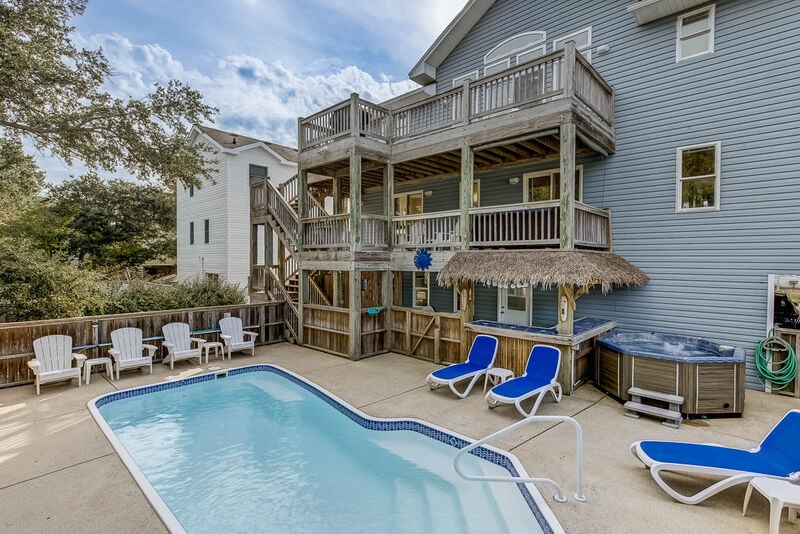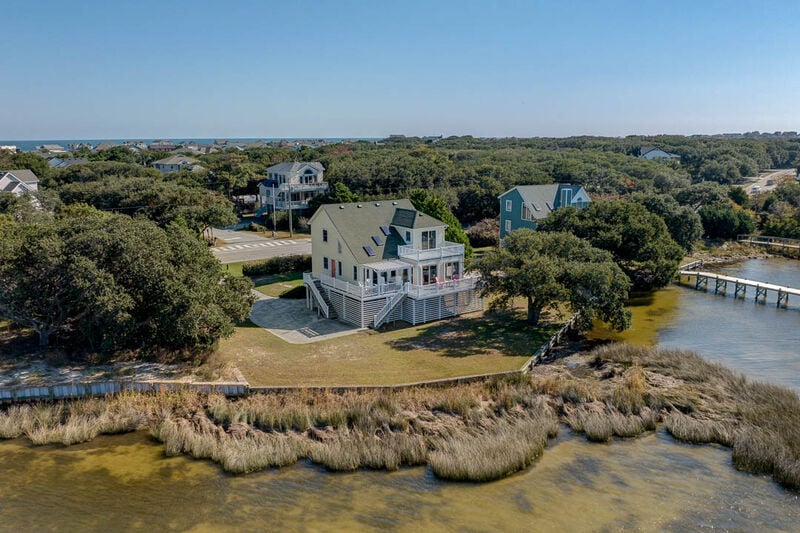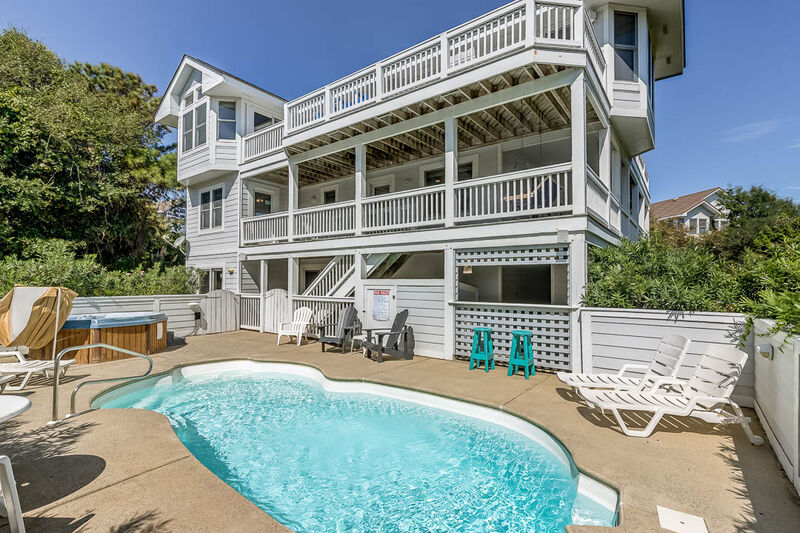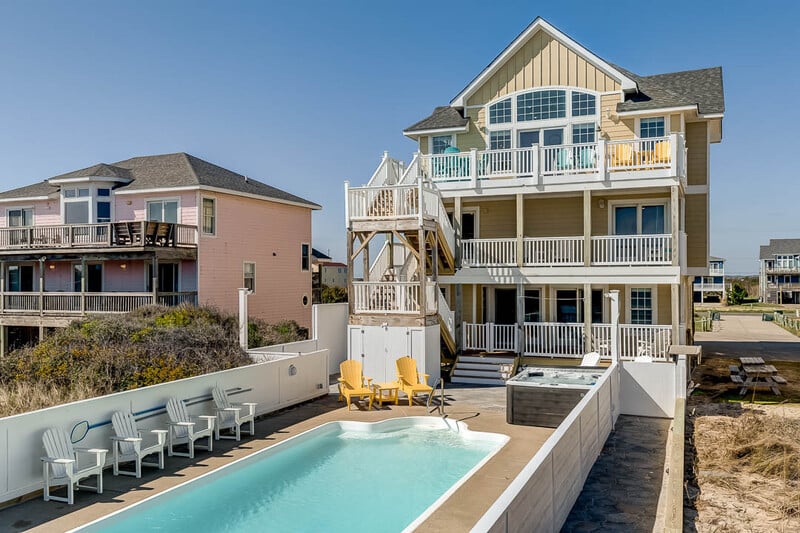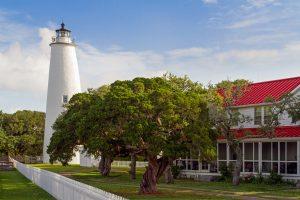
Ocracoke Inlet is the oldest inlet in the Outer Banks. As an entry point for English colonists who passed through it in 1585 on their way to Roanoke Island (Manteo), it provided a safe, smooth passage. As the colony grew, Ocracoke Inlet became a thriving hub for trade. As trade and traffic increased, the inlet developed a notorious reputation for being dangerous — but not because of the shoals.
What's More Dangerous than Shoals? Pirates.
However, unlike Diamond Shoals off the coast of Cape Hatteras, Ocracoke Inlet's dangers were above the water in the form of pirates. By the early 1700s, Ocracoke Inlet was a bounty for famous scallywags such as Calico Jack, Anne Bonney, and Mary Stede.Maybe the most famous resident of the inlet was Edward Teach, better known as the pirate Blackbeard. He set up house on Ocracoke Island, then later across the water in Bath on Pimlico Sound. He was so bold that he lived ashore and looted and pillaged the waters from his infamous ship,
Queen Anne's Revenge, almost as a normal day job. It took a few years, but the government finally put an end to the pirate's tyranny — and to the pirate himself — at a place now named Teach's Hole just on shore from the inlet.
The First Lighthouse
The waters of the inlet aren't without natural dangers. Thanks to the often-violent storms, strong currents, and high swells, the bottom of the inlet frequently shifts. There are deadly shoals and ever-changing sands beneath the waves that have claimed their share of ships and sailors.The first documented wreck in the inlet was in 1585, but it wasn't until 1794 that the U.S. Lighthouse Service decided to build a lighthouse to help ships navigate through. The first lighthouse was constructed on Shell Castle Island between Ocracoke and Portsmouth Island. It was a somewhat basic structure with a small lightkeeper's cottage nearby. However, if there's one thing Outer Banks mariners know, it's that the ocean moves things around. By 1818 the main channel had migrated more than a mile, making the lighthouse obsolete. Coincidentally, that same year the original tower and cottage were hit by lightning and destroyed.
The Modern Lighthouse: A Hurricane Haven
A new lighthouse, complete with a one-room lightkeeper's cottage, was built at the south end of Ocracoke Island in 1823, where it still stands today. It is the second oldest operating lighthouse in the country. It's only 75 feet tall, but with a base that measures 5 feet thick at the bottom, it's sturdy. So sturdy in fact that locals use to move into the structure to ride out hurricanes high above the floodwaters.You can't climb the lighthouse today, but it is interesting to stand at the base and imagine what it would be like to endure howling winds and driving rain inside a small, dark pyramid so close to the raging ocean. What's more, other villagers rode out storms in the one-room lightkeeper's house. When you visit, try to decide where you'd rather be in a hurricane.You may notice the Ocracoke Lighthouse is solid white instead of the barber pole striping seen on the Cape Hatteras lighthouse. The white color is easily seen from water during the day, which is a big help to mariners. Initially, mixing lime, salt, Spanish whiting, rice, glue, and boiling water made the white color. Burning oil against a backdrop of hand-cut prisms (until the tower was electrified in the early 1900s) created a bright light. The beam is visible up to 14 miles at sea.
Life as a Lightkeeper
The lightkeeper's house is one of the best attractions for visitors. Lightkeepers lived simply in one room and lived lives of routine. In 1897 an assistant lightkeeper was hired and a second story added to the original cottage. The double quarters housed two lightkeepers and their families. During the day they spent time keeping the grounds and buildings in good repair, keeping the wicks trimmed on the lighthouse's oil lamps, raising animals, and gardening.Unlike other lightkeepers, who may be isolated on desolate, rocky coastlines miles from another person, Ocracoke lightkeepers were close enough to village life to be part of the community and send their children to school "in town."
Visiting the Lighthouse
Today the U.S. Coast Guard takes care of the lighthouse, and there is no resident lightkeeper. However, the tower still serves as a visual icon for marine traffic that passes. You'll find the lighthouse in Ocracoke Village at the south end of Cape Hatteras National Seashore. Just follow Lighthouse Road, or set your GPS to 35.108960 latitude and -75.985951 longitude.Ocracoke Lighthouse has been a faithful friend to Ocracoke villagers and mariners over the decades. As one of the great historical icons in the Outer Banks, the lighthouse is worth a visit.
 Ocracoke Inlet is the oldest inlet in the Outer Banks. As an entry point for English colonists who passed through it in 1585 on their way to Roanoke Island (Manteo), it provided a safe, smooth passage. As the colony grew, Ocracoke Inlet became a thriving hub for trade. As trade and traffic increased, the inlet developed a notorious reputation for being dangerous — but not because of the shoals.
Ocracoke Inlet is the oldest inlet in the Outer Banks. As an entry point for English colonists who passed through it in 1585 on their way to Roanoke Island (Manteo), it provided a safe, smooth passage. As the colony grew, Ocracoke Inlet became a thriving hub for trade. As trade and traffic increased, the inlet developed a notorious reputation for being dangerous — but not because of the shoals. Ocracoke Inlet is the oldest inlet in the Outer Banks. As an entry point for English colonists who passed through it in 1585 on their way to Roanoke Island (Manteo), it provided a safe, smooth passage. As the colony grew, Ocracoke Inlet became a thriving hub for trade. As trade and traffic increased, the inlet developed a notorious reputation for being dangerous — but not because of the shoals.
Ocracoke Inlet is the oldest inlet in the Outer Banks. As an entry point for English colonists who passed through it in 1585 on their way to Roanoke Island (Manteo), it provided a safe, smooth passage. As the colony grew, Ocracoke Inlet became a thriving hub for trade. As trade and traffic increased, the inlet developed a notorious reputation for being dangerous — but not because of the shoals.

